There’s magic in a simple hibiscus flower which you must dip in honey vinegar. Or in the Dry meringue and sardine. There’s pureness in the Spinach with three broths: kombu, lacón and tomato. There’s talent is in the Onion from Vilanova in tempura, broth of smoked and salted fish, aromatised oil with flowers of savory. There’s skill in the Sea and earth asparagus, or in the Percebes, garlic flan, garum, portulaca, soup of pine oil. Together, they have a spectacular outcome, so much so that for us as well as for the Spanish colleagues who praise him, chef Javier Olleros has become deservedly one of the greatest chefs.
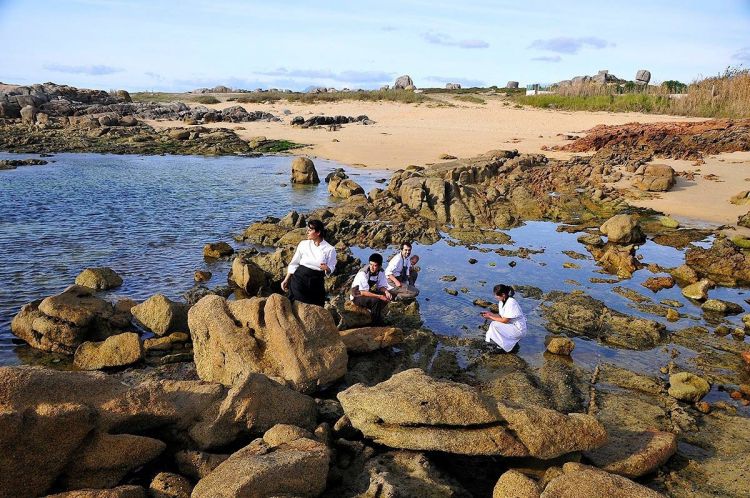
Javier Olleros and brigade in the magnificent scenery of theRias Gallegas
We had already dined at his
Culler de Pau years ago. In the words of the excellent
Angela Barusi for
Guida Identità Golose, it’s a restaurant "in the heart of the
Rias Gallegas, the long arms of sea that penetrate the inland and define the Galician landscape and in some way even the spirit of its inhabitants. A surprising mix of contrasts: ocean and land, magic and real, the power of nature and of man". On this enchanted horizon stands out the art – art indeed – of
Olleros, born in 1974, whose previous experience includes
Berasategui, and who has won the “revelation restaurant” award at
Madrid Fusión 2010.
He knows these things well, even though he was born in Lucerne, in Switzerland, where his father – also a cook – emigrated to work in the kitchens of large restaurants. As for his mother, she owned hotel
Mar Atlántico, in O Grove. And it was right in this tiny and magnificent village that
Olleros opened his restaurant in 2009, after acquiring experience, on top of with
Berasategui, also with
Sergi Arola in Madrid and then in Tokyo with
Seiji Yamamoto.
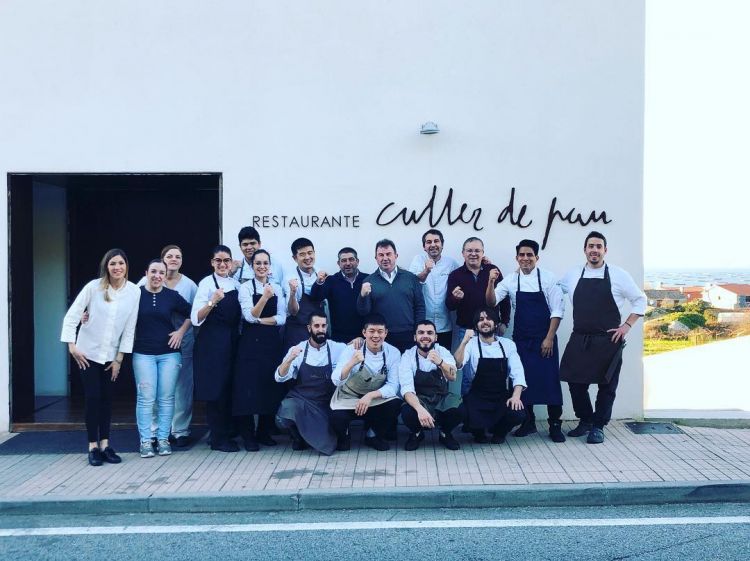
A recent visit of Berasategui to Culler de Pau
«
Culler relies mostly on our strength, we have nobody supporting us. There’s lots and lots of work to do. The keyword in this adventure is "
time". We need
time». Time to make this restaurant grow; time to find the best balance; time to refine techniques and offer. In 2014, when we made our first visit, the restaurant had already reached high standards; in
time, indeed, it reached peaks we didn’t even expect. Totally harmony, pure flavours, often brilliant ideas. He tells us: «I still don’t feel fully mature. Of course, now I’m much surer of what I’m doing». His day of work starts early and ends late, «but we’re not tired. And I’m sure of something: we will continue to have illusions», which we’ll then transform into marvellous dishes.
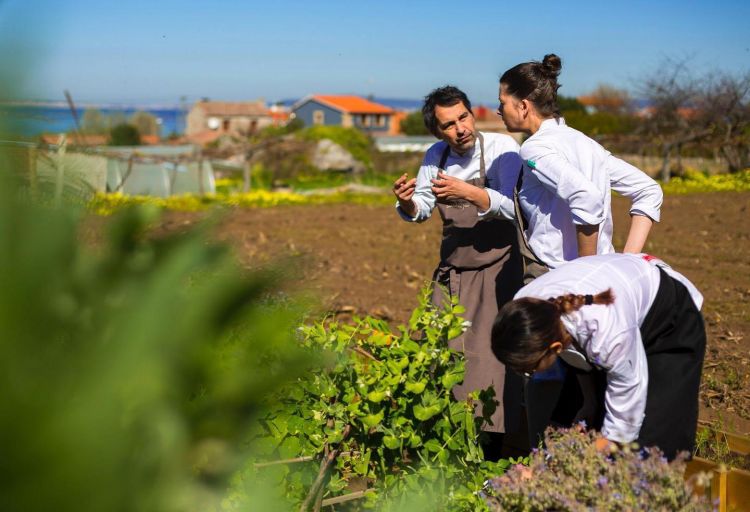
The vegetable garden at Culler de Pau
The new frontier for Culler de Pau is sustainability, responsibility, respect. Ninety percent of the supplies already come from local organic producers. «It’s simple: we already have a vegetable garden, and there are many more, close by. You can find all sorts of products».
Olleros recycles 60% of the organic materials used, and has launched his own compost system. He explains: «I don’t like speaking about sustainability. I’d rather speak of responsibility. For us, this is a daily commitment, without making too much fuss, because we make small steps. We cannot, perhaps it’s impossible, change things all of a sudden. However, we are aware of the goal we want to reach, and we work hard every day to get closer and closer to that goal».
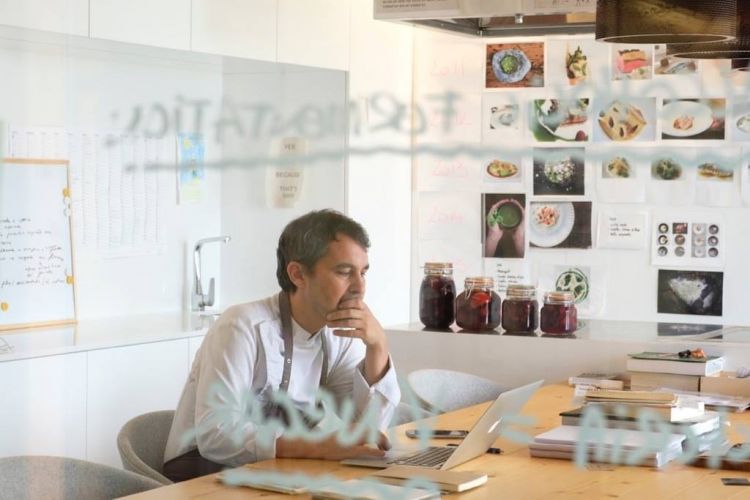
Before going up to the dining room, on the first floor of Culler de Pau’s building, you walk past Olleros’s laboratory, crowded with drawings, diagrams, analyses: scattered on the table, hanging on the walls. «This is my place of study, a sort of "highway" that I consider vital because it allows me to clear my ideas, to have creativity, curiosity and technique meet. The more we are in the brigade [the current staff is made of 14 people in the kitchen, plus 6 in the dining room, plus a gardener and a farmer], the more one needs to give meaning to things».
Principles and values that the chef conveys in silence, with a humbleness that only at times reveals his enthusiasm. What’s important is that our lunch was marvellous. We illustrate it now, through Tanio Liotta’s photos.
Translated into English by Slawka G. Scarso
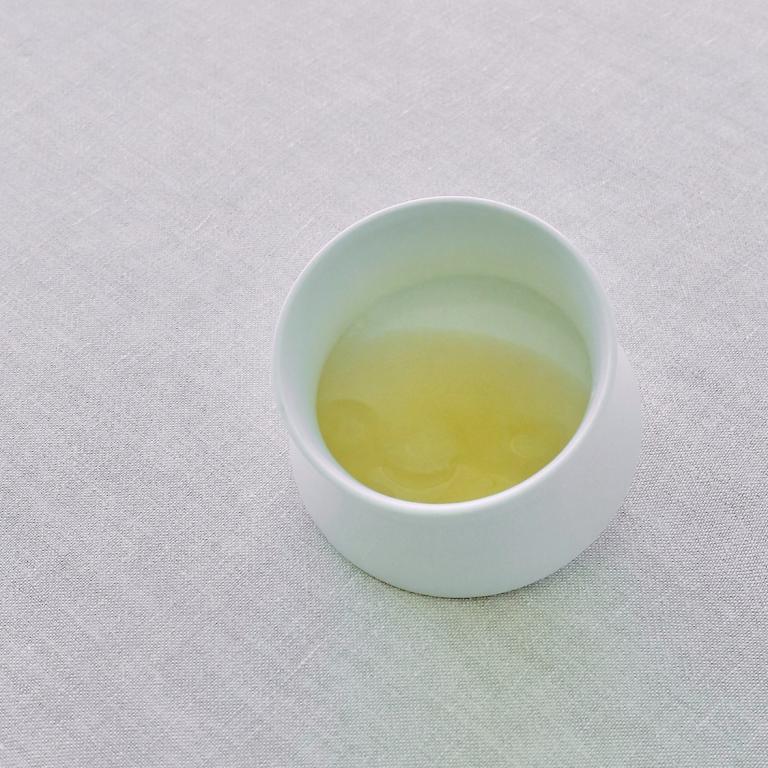
Infusion of fermented herbs from the vegetable garden
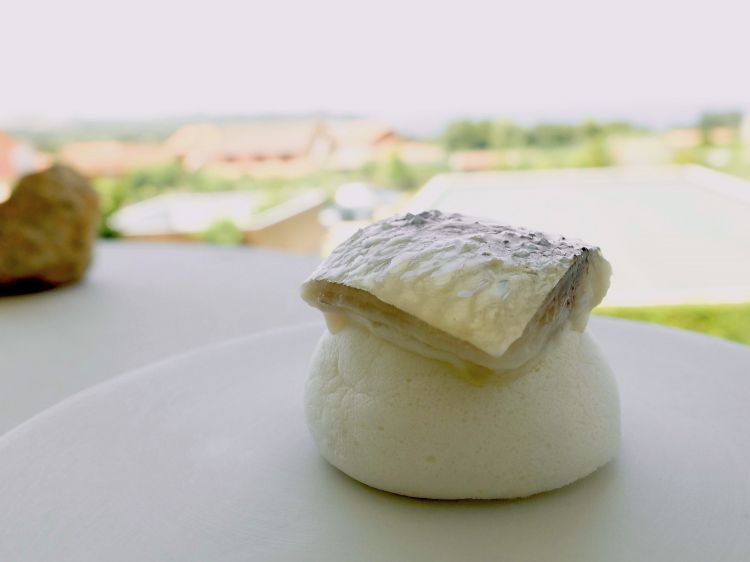
Dry meringue and sardine: a small sweet-savoury masterpiece
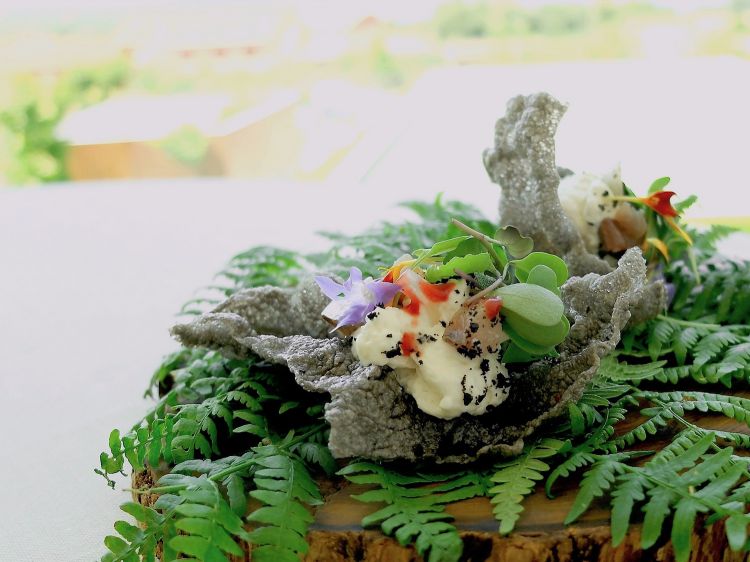
Crispy rice and ink squid wafer, herbs and flowers, cream of seafood and anchovy
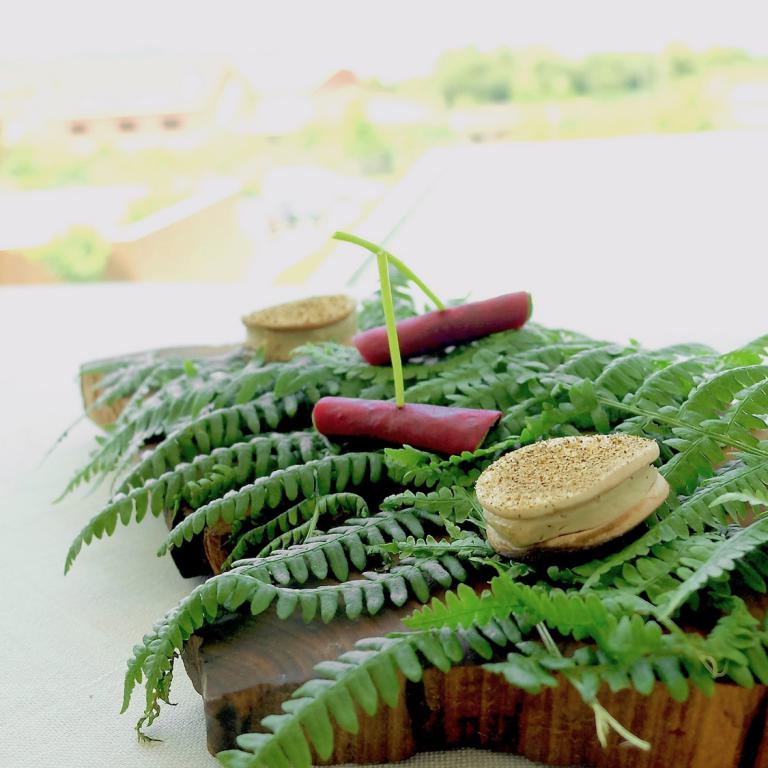
Pickled beetroot and leaf of nasturtium; then Champignon sandwich
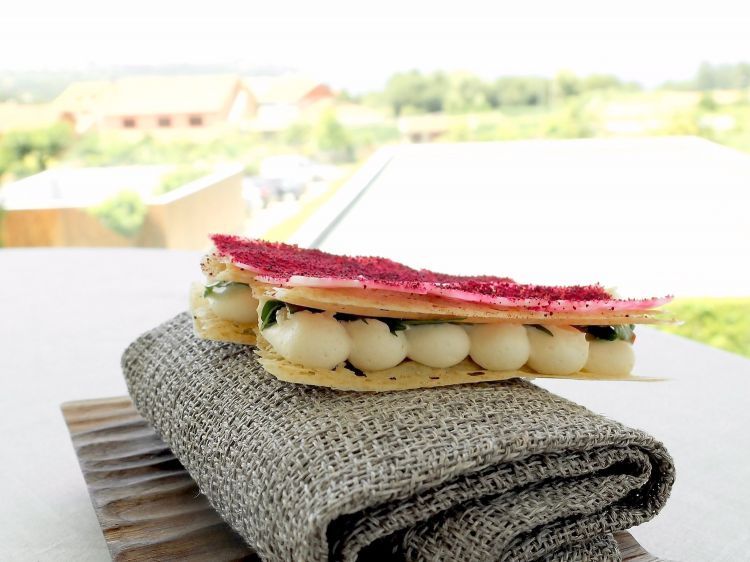
Wheat toast, cream of San Simón, pickled celeriac. San Simón is a delicious and multi-awarded Galician cow’s milk cheese, with a delicate smokiness
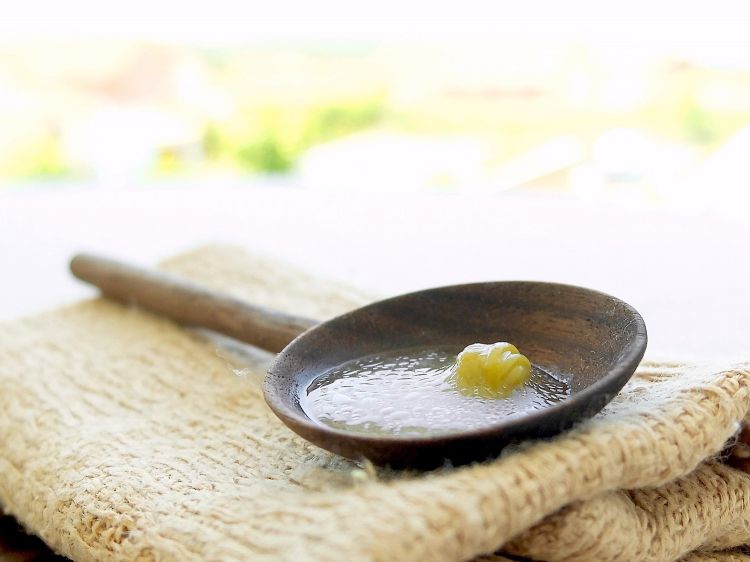
Fermented nasturtium seeds and fennel soup
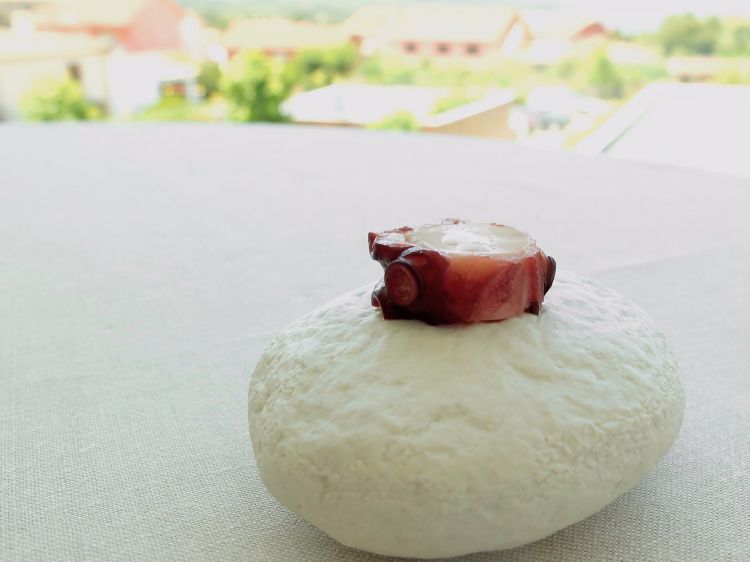
Octopus cooked in its broth
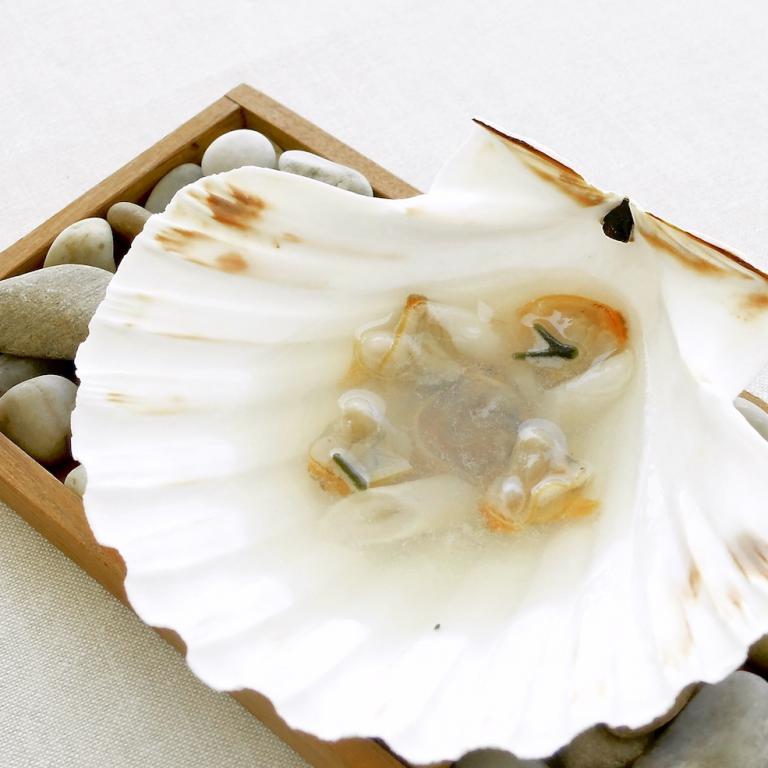
Seafood with rock broth and codium. In a scallop shell, a seafood broth surrounding cockles, razor clams, sea truffles...
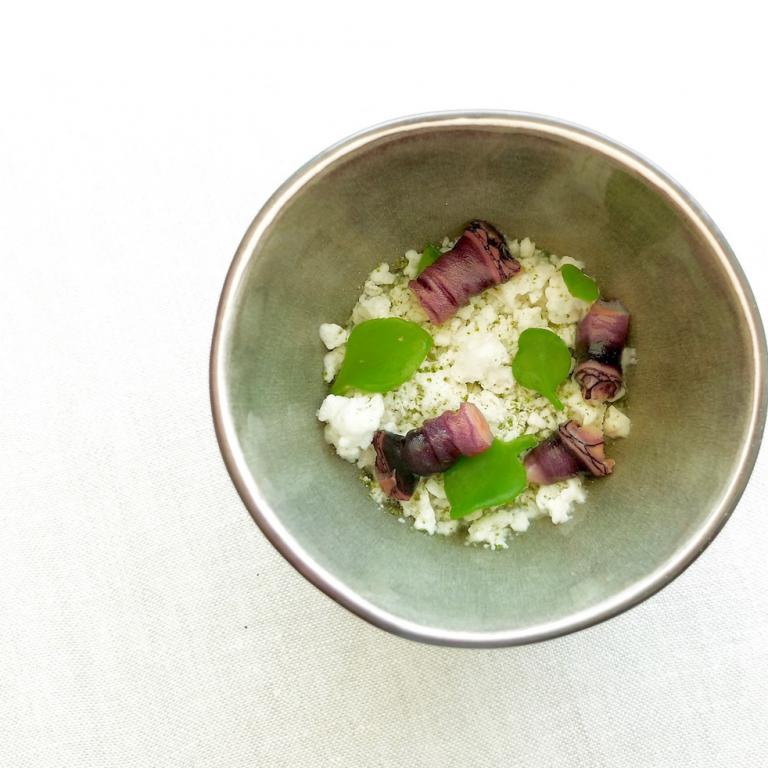
Percebes, garlic flan, garum, purslane, soup of pine oil. A stunning, perfect, magical dish
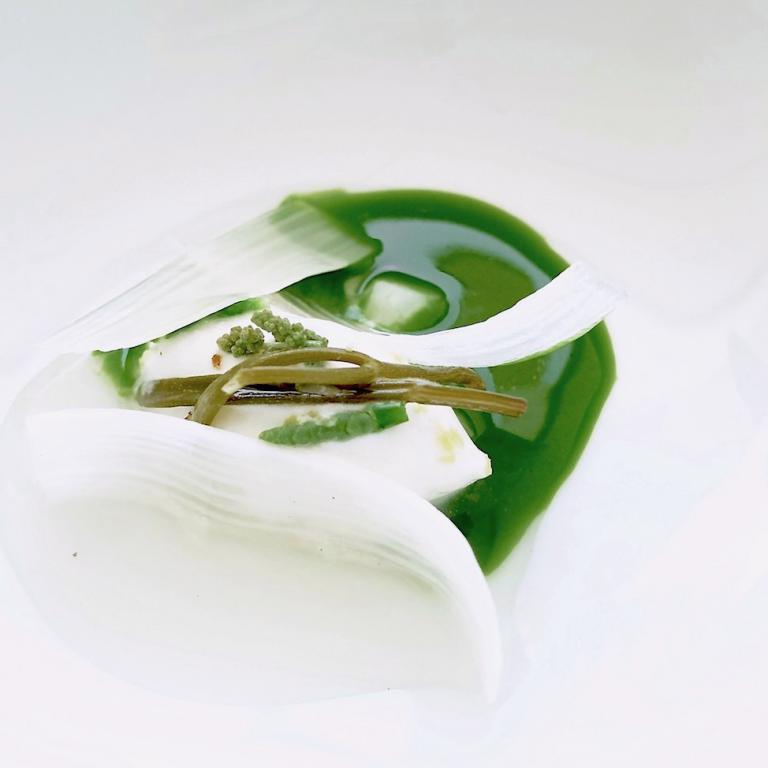
Another masterpiece, Sea and earth asparagus. The broth is made with plankton, there’s samphire, and an ice cream of asparagus. Extremely clean, excellent technique
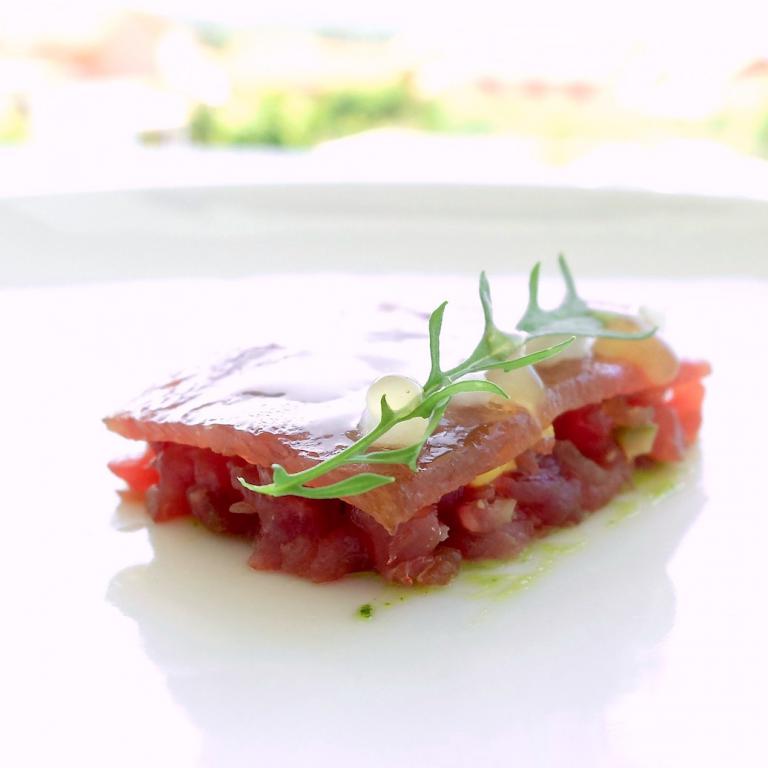
Cachena Veal, mustard and spicy herbs. Cachena is the high-quality Galician breed, it’s small cattle that gives little meat. Its breeding has been almost totally replaced by more productive breeds; today it’s being recovered. The dish is simply exemplary, masterful
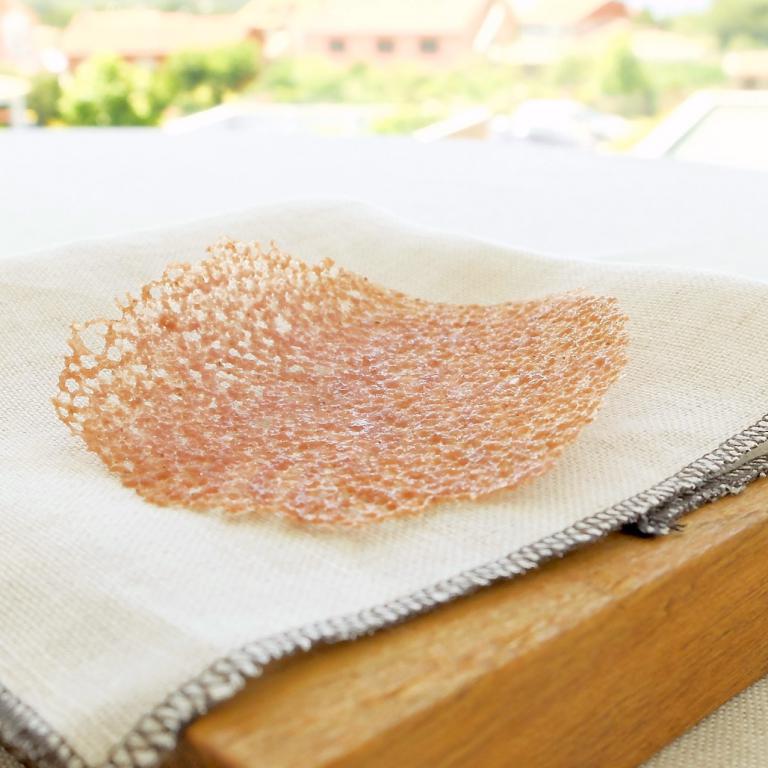
A simple tuille of Millo Corvo, a Galician indigenous corn variety that had almost disappeared. It’s also a Slow Food Praesidium, see here
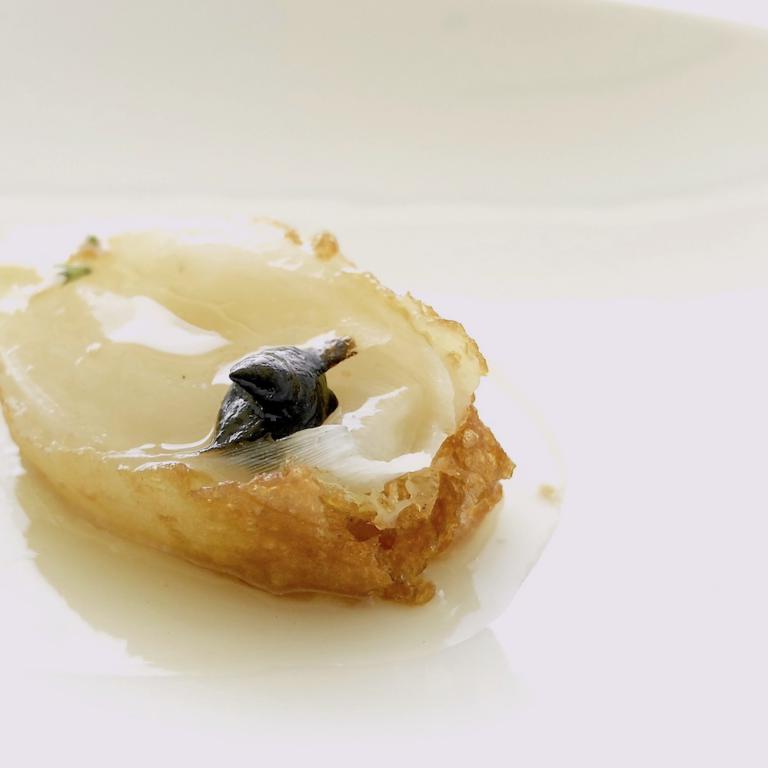
Onion from Vilanova in tempura, smoked and salted fish broth, spicy oil with samphire flowers. Once again, spectacular standards
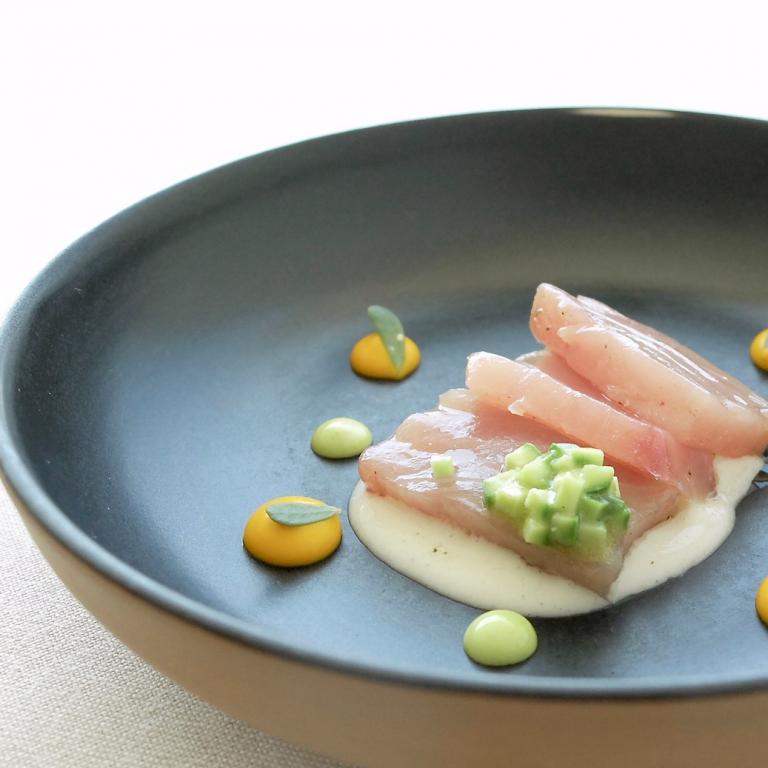
Burela Bonito, escabeche, carrots and sorrel. They buy the Bonito from the market in Burela, a small port in Galicia. The escabeche is the Iberian equivalent of Italian scapece
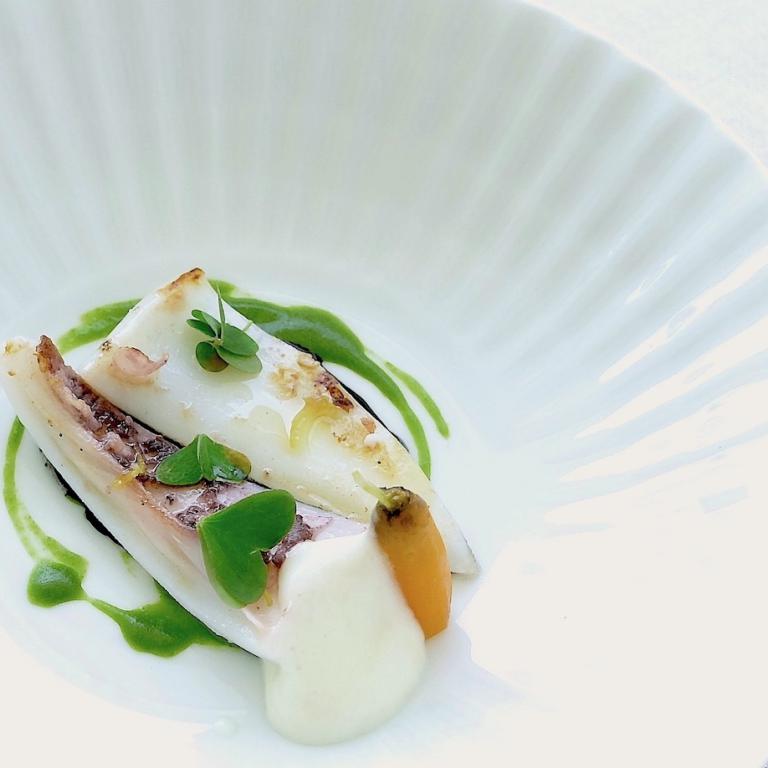
Calamari, sauce made with calamari ink, carrots from the vegetable garden and clover
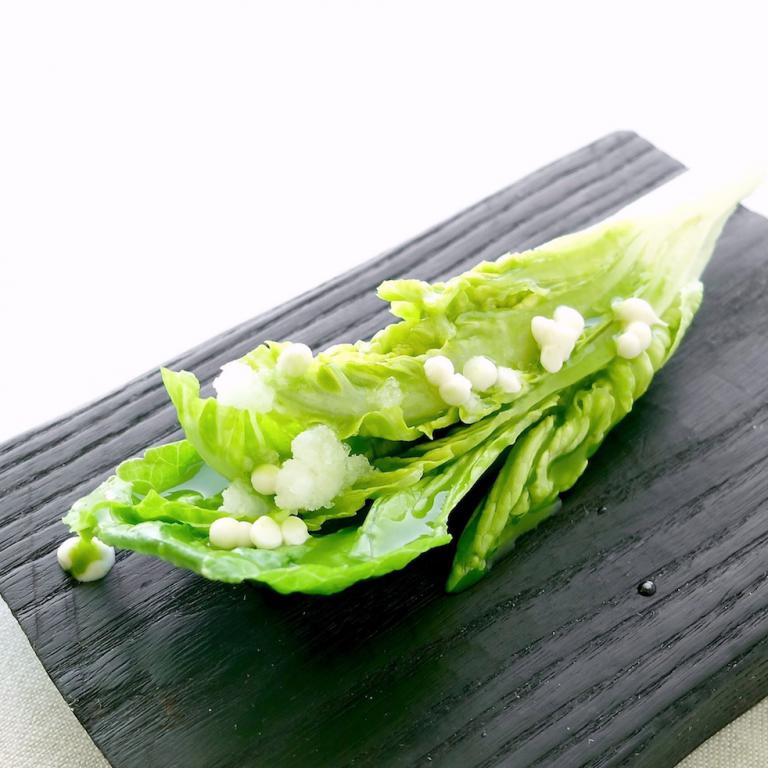
Heart of lettuce, juice of salpicón vegetables and almonds. Salpicón is a sort of typical salad made with diced vegetables, with lots of variations, including some with meat
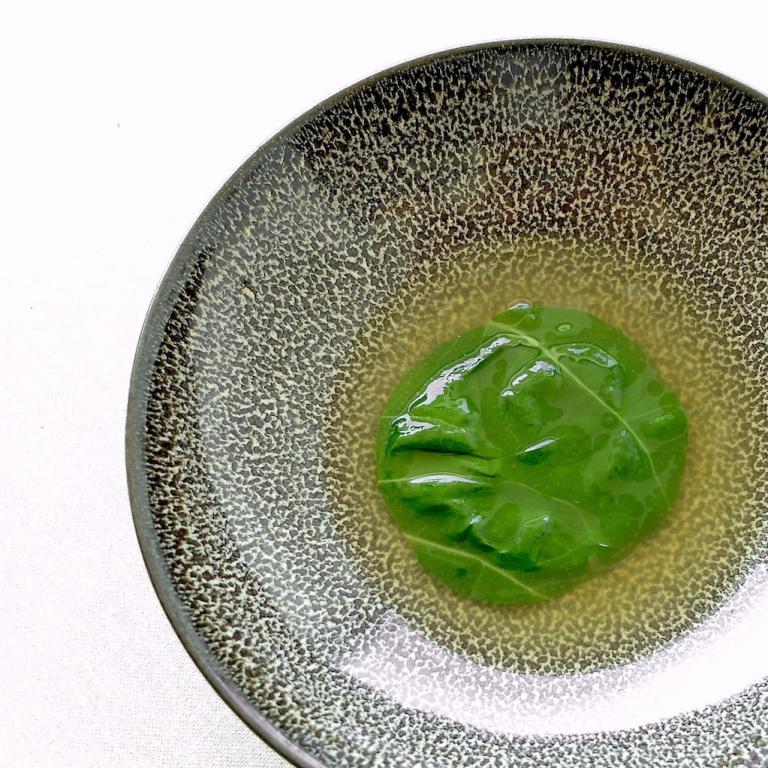
Incredible Spinach with three broths: kombu, lacón and tomato. Lacón is the typical, traditional cut of pork: it’s the lower front part of the animal
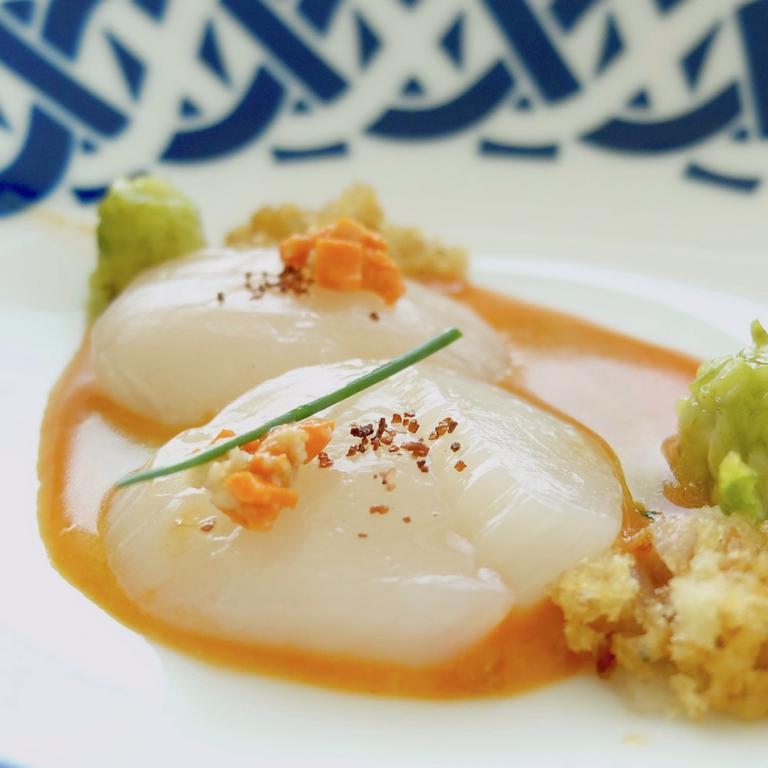
Galician scallops, broth of seeds of Pimientos del Padrón, a delicious green pepper, a typical variety of Padrón, a village in the province of A Coruña, in Galicia
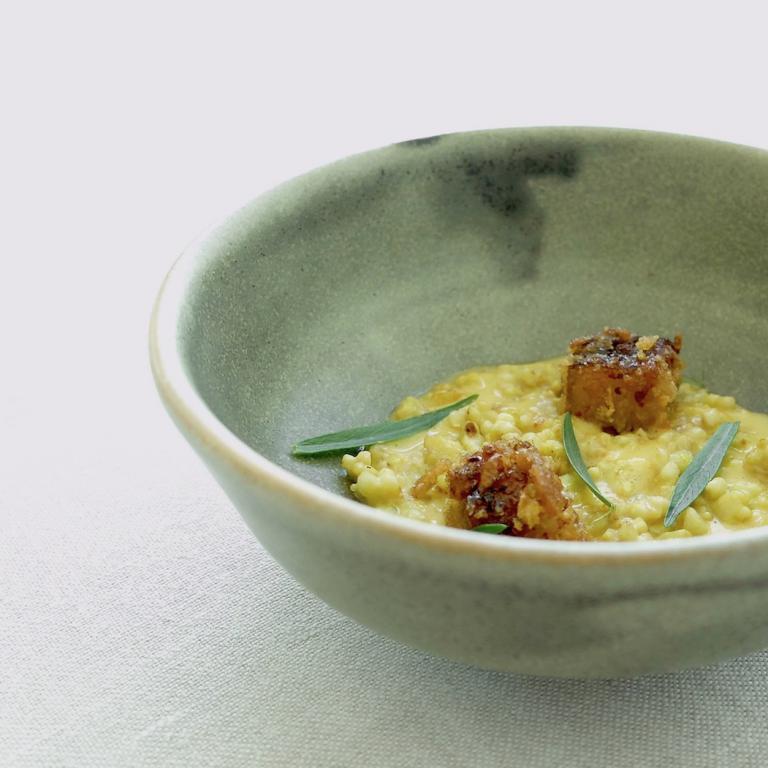
Tender Galician corn, jus of hen escabeche, pancetta and oxalis. How delicious
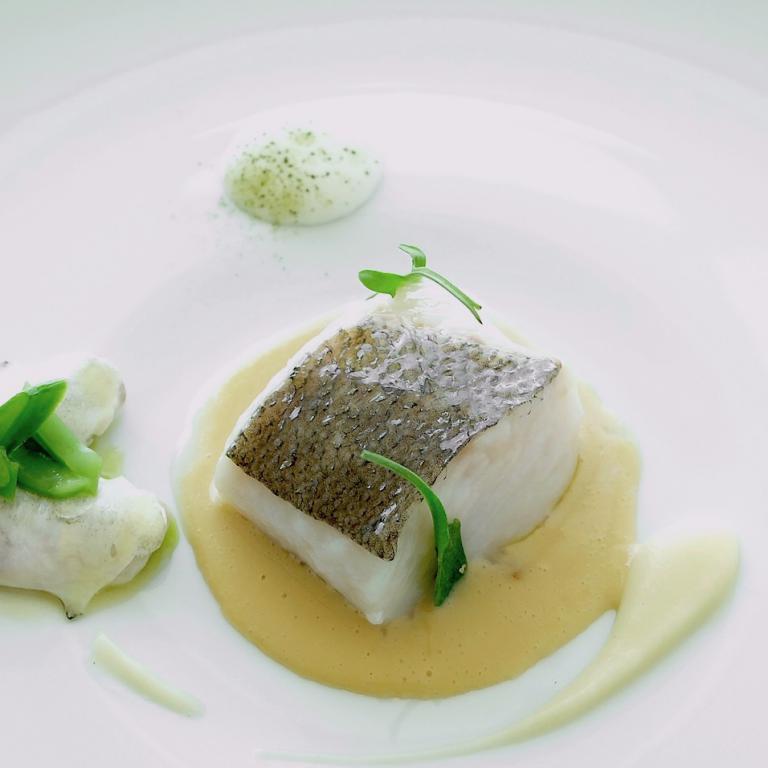
Cod, its kokotxas, sauce meuniere, French beans and sorrel. Kokotxas is the underpart of the cod’s jaws, a mostly Basque specialty
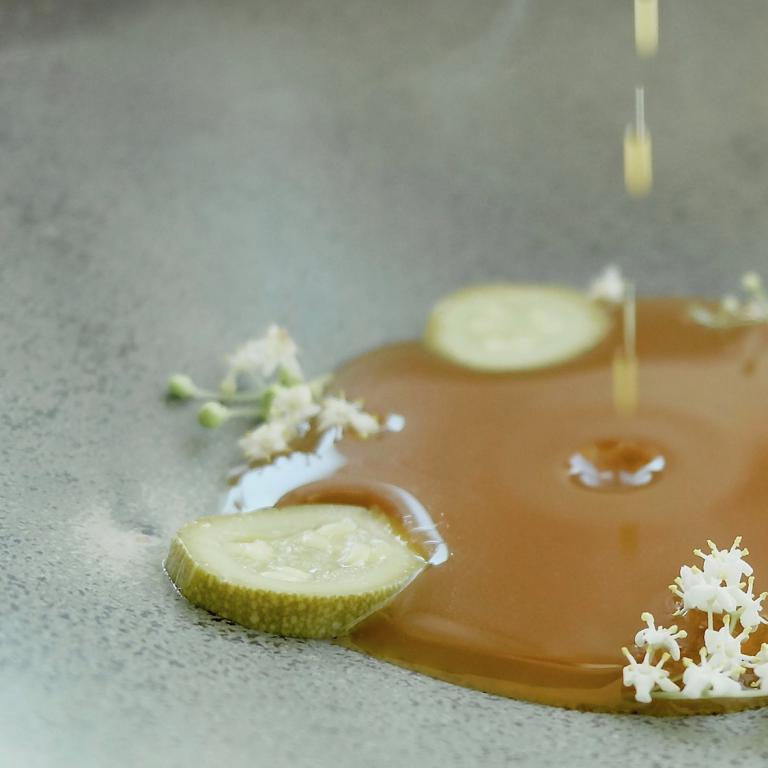
Courgettes, elderberry flowers, powdered veal tendons, juice of callos, a tripe-based dish. Another memorable dish
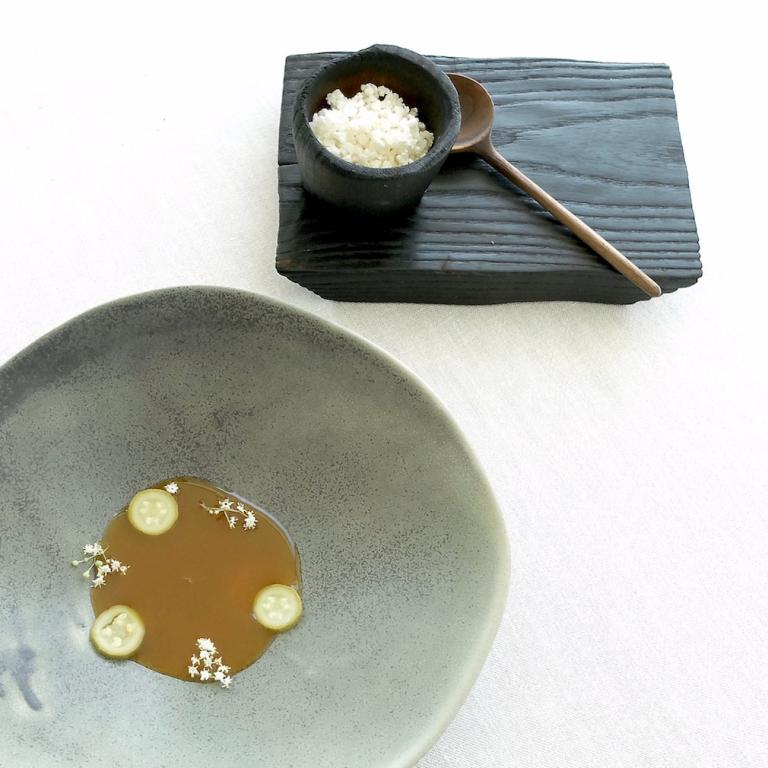
The dish is served with the puffed powdered veal tendons on the side, which you can add to taste
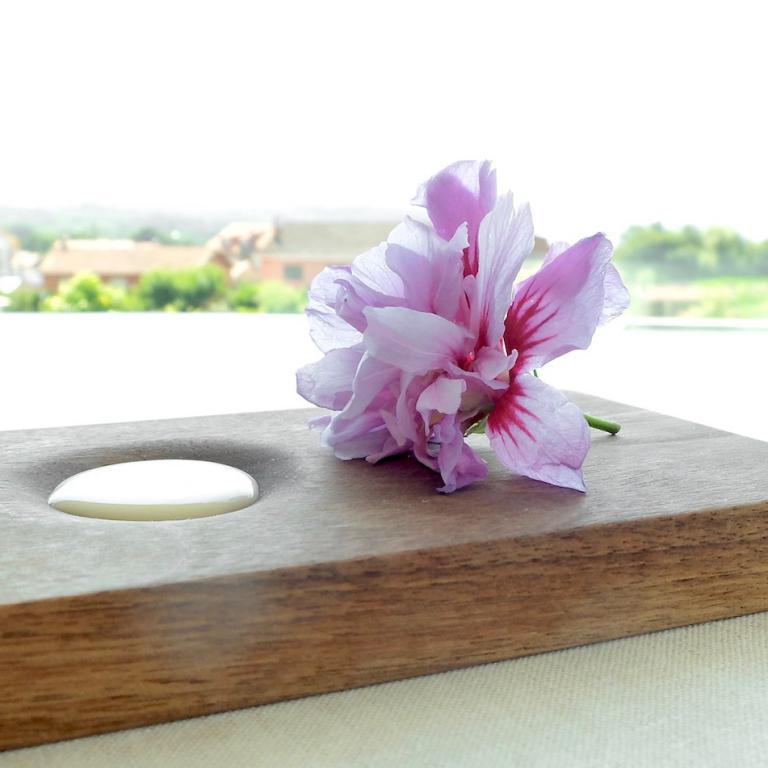
This Trébol bravo is stunning: you must dip the flower of hibiscus in a cold cream of honey vinegar. Absolute pureness
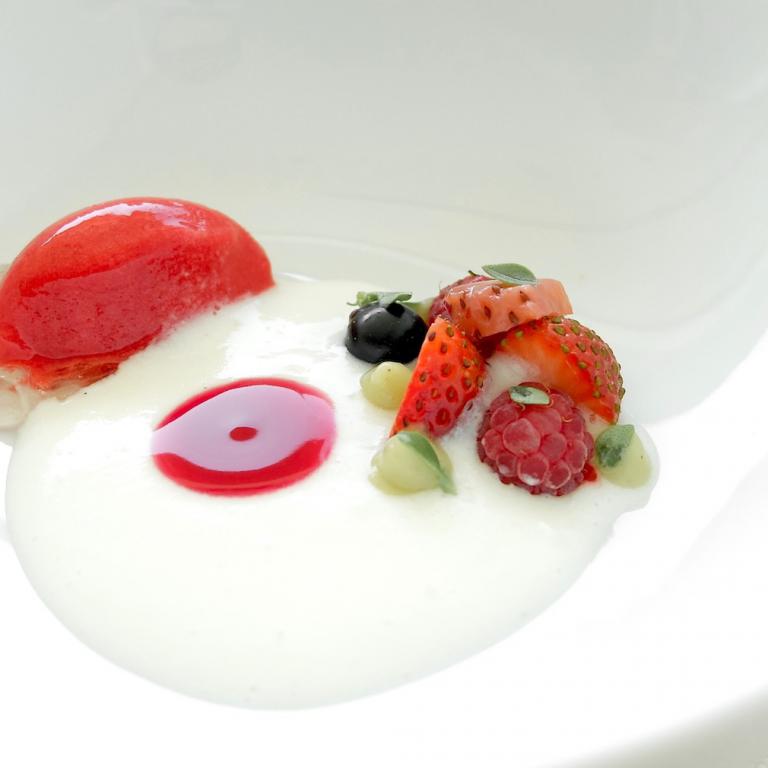
Kefir, wild cherries, beetroot vinegar
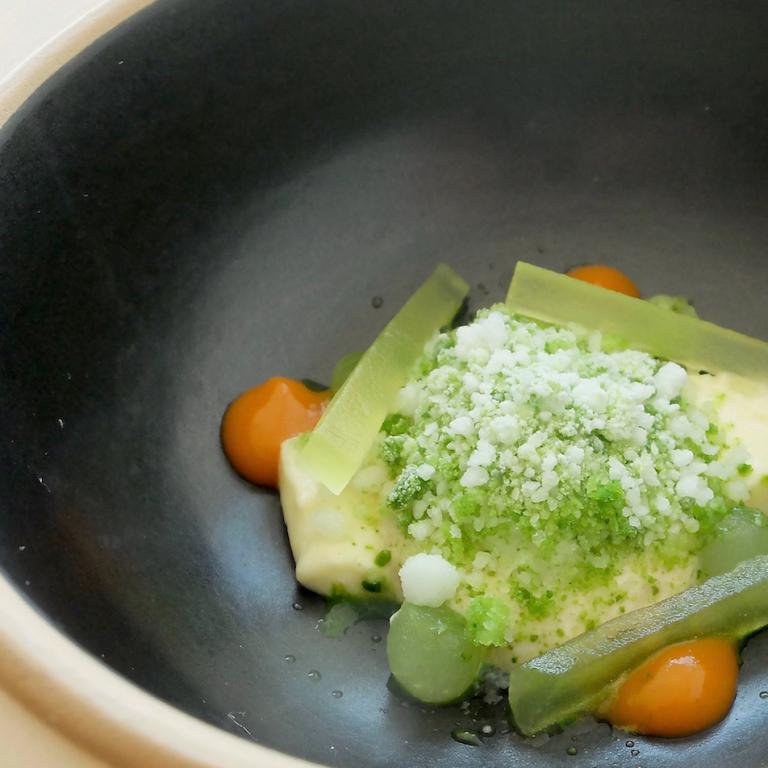
Celery, carrot, cucumber, melon and nasturtium